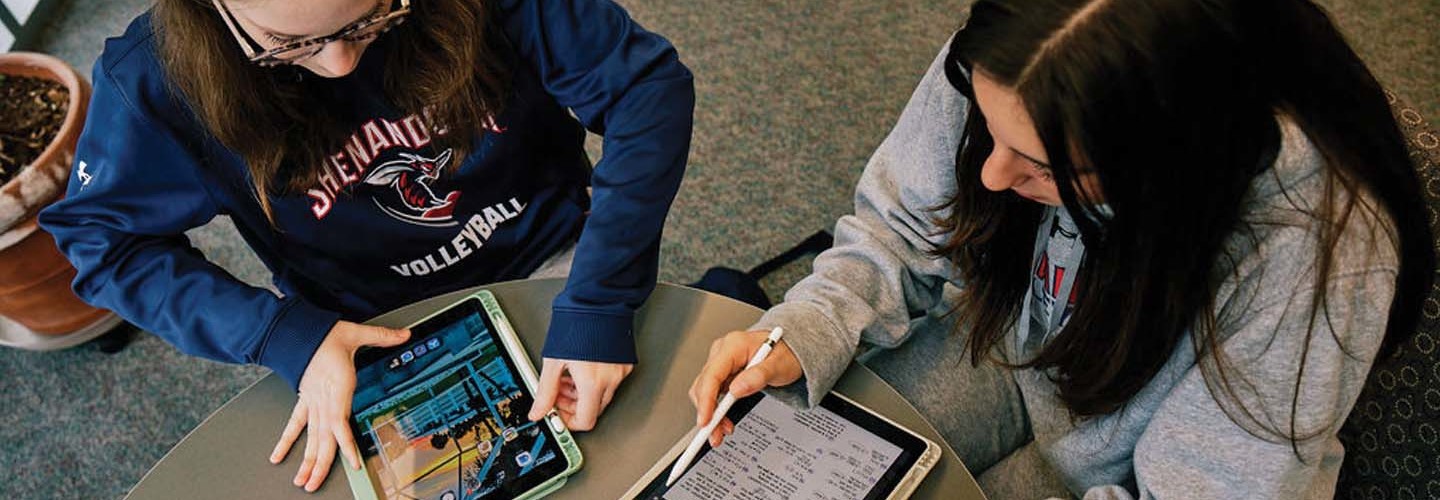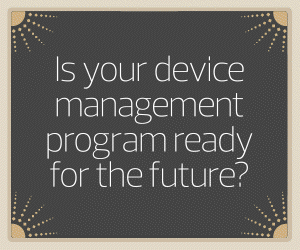In 2009, Shenandoah University in Winchester, Va., began equipping each student with a MacBook Pro and either an iPhone or an iPod Touch from Apple through its iMLearning program. Today, each incoming student receives a MacBook Air, an iPad and an Apple Pencil.
“For the first year, I was constantly in touch with people at other universities, asking them questions,” recalls Don Silvius, senior iMLearning support specialist in Shenandoah’s Office of Information Technology.
Nearly a decade and a half later, Silvius is the old pro who gets peppered with questions by others. Here are 10 of the most important lessons he’s learned along the way.
Read this case study and learn more about Shenandoah University’s one-to-one device program.
1. Infrastructure is key to success. Shenandoah already had a robust Wi-Fi network in 2009, but IT leaders recognized that extra capacity would be needed to accommodate new traffic from the one-to-one device program. “Pretty much every year, we’ve made some changes to the Wi-Fi network,” Silvius says. “We increased the number of access points tremendously in that first year, and that really saved us.”
2. Tech levels the playing field. “Before we started iMLearning, students would come in with their older sibling’s 10-year-old laptop that was still running Microsoft Windows XP,” Silvius says. “With a standardized device program, everyone has access to the same technology. We don’t have to worry about students lacking access due to their economic background.”
3. A device is not just a device. When students enroll at Shenandoah, they receive more than just MacBooks and iPads; they get access to a full suite of wraparound services that help them to make the most of their devices. Shenandoah’s technology fee also covers custom applications, 24/7 wireless access, hardware and software support, anti-virus software, four years of AppleCare, and access to Microsoft 365.
4. Standardization simplifies support. With only two device types from a single vendor, Shenandoah’s IT support staff can develop deep expertise rather than trying to stay up to date on myriad different platforms. “Our help desk has been outstanding,” Silvius says. “I think having an almost all-Apple campus makes a difference.”
5. Not everyone will be on board (and that’s OK). As Silvius has learned, you can’t please all of the people all of the time. “I went to a conference in the very beginning with three faculty members, and an English professor said during one of the sessions that he didn’t see how this was going to benefit his students,” Silvius recalls. “Even today, there are a handful of professors who tell students not to bring their devices to class with them.” Those instructors are a distinct minority, however, and they haven’t prevented the iMLearning program from having a significant campuswide impact.
Click the banner below to learn how to optimize your university’s device management program
6. Evolution is essential. When Shenandoah launched iMLearning, the iPad didn’t even exist, and the Apple Pencil didn’t make its debut until 2015. (The iPod Touch, which was a central component of the initial program, was discontinued last year.) There were also only a handful of learning apps back in 2009, and today there are almost too many to choose from. Leaders at Shenandoah have constantly tweaked the program in response to changing technology and student needs.
7. Some of the best ideas will come from students. While he was earning his master’s degree from Shenandoah, Silvius taught an undergraduate class, and it was his students who suggested that he adopt Notability, a note-taking app for the iPad that syncs handwritten notes with lecture recordings. “I was learning from the students,” he says.
8. Management is a must-have. In the early years of the program, IT staff monitored the iMLearning devices by tracking them on the school’s Wi-Fi network. As the program matured, it became clear that Shenandoah needed a dedicated mobile management platform. The school opted for Jamf, and the tool helps the IT department do everything from pushing out OS updates to locking down stolen student devices.
9. Partners can help with deployment. During the COVID-19 pandemic, Shenandoah partnered with CDW to ship devices to students’ homes. The rollout went so smoothly that the school continues to leverage the partnership for asset tagging, configuration and other time-consuming deployment tasks. “Before, we had four people working for a week to get devices ready,” Silvius says. “With CDW taking care of that, we can turn our attention to other parts of the program.”
10. Commonality fosters campus culture. Silvius notes that standardized devices give all Shenandoah students a common touchpoint for their campus experience. The program also fosters a culture of collaboration, since students often work together to unlock the full capabilities of their devices. “The biggest eye-opener for me was how helpful students were with each other,” Silvius says. “Over time, that has become an important part of the campus culture.”












